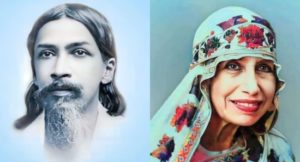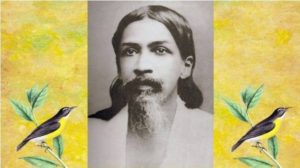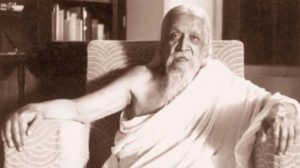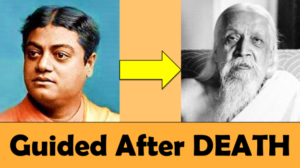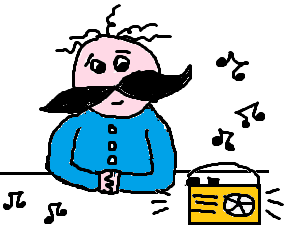A disciple once asked Sri Aurobindo to reveal who he had been in his past lives. Here is the answer he gave as noted in the book: Letters on Himself and the Ashram. (Free Download)
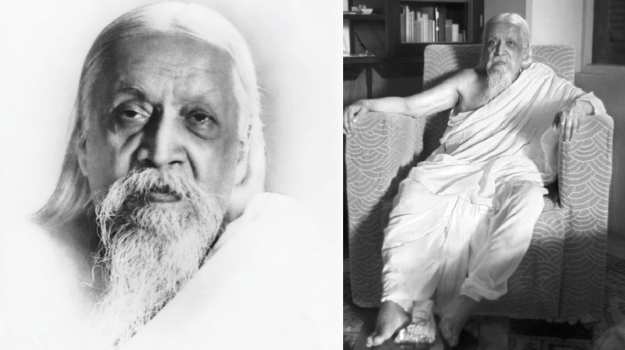
But to overpass this outward development is of course the main aim of the Yoga. We are not to be tied by our past lives. Too much importance must not be given to past lives. For the purpose of this Yoga (Integral Yoga) one is what one is and, still more, what one will be. What one was (in the past) has a minor importance.
– Sri Aurobindo
Disciple: We have various guesses about your previous lives. The other day I happened to ask X whether you were Shakespeare. He was diffident. My own belief is that you have somehow amalgamated all that was precious in those that manifested as Homer, Shakespeare, Valmiki, Dante, Virgil and Milton: if not all, at least the biggest of the lot. Kindly let us know the truth. Among your other and non-poetic incarnations, some surmise Alexander and Julius Caesar.
Sri Aurobindo: Good Heavens, all that! You have forgotten that Mrs. Besant claims Julius Caesar. I don’t want to be prosecuted by her for misappropriation of personality. Alexander was too much of a torrent for me; I disclaim Milton and Virgil, am unconscious of Dante and Valmiki, diffident like X about the Bard (and moneylender?) of Avon. If, however, you can bring sufficiently cogent evidence, I am ready to take upon my back the offences of all the famous people in the world or any of them; but you must prove your case.
Seriously, these historical identifications are a perilous game and open a hundred doors to the play of imagination. Some may, in the nature of things be true; but once people begin, they don’t know where to stop. What is important is the lines, rather than the lives, the incarnation of Forces that explain what one now is—and, as for particular lives or rather personalities, those alone matter which are very definite in one and have powerfully contributed to what one is developing now. But it is not always possible to put a name upon these; for not one hundred-thousandth part of what has been has still a name preserved by human Time.
Post Continued Below
Understanding Sri Aurobindo’s Warning Against Speculating About Past Lives
Who were we in our past life? Who was Sri Aurobindo, or Swami Vivekananda, or some other great personality in their past lives? These are thoughts that flit across the minds of many sadhaks now and then. And these occasional idle thoughts are all right.
However there are a few sadhaks who pursue this line of thinking more aggressively, devoting significant time and effort to charting linkages between a certain guru, or for that matter between their own selves and various great historical personalities. Unfortunately, because such sadhaks do not possess the spiritual insight of a God-Realized yogi (who has knowledge of the subtle and causal realms), they end up drawing erroneous conclusions based on superficial and faulty considerations such as similarities in facial features, likes and dislikes, or similar field of activity (political, social etc.).
And so it was to warn his disciples against habituating their mind to indulge in such wild and erroneous imaginations, that Sri Aurobindo issued the above words of caution. Now the rational reason behind this warning was that when sadhaks immerse their minds in uncontrolled speculations and base their judgement on faulty parameters, they end up severely weakening their sense of vivek, that is their ability to discriminate between truth and falsehood. Sadhaks then are easily led astray from the path of God-realization – from the path of discovering the Highest Truth which permeates the Universe.
Because in order to discover the Highest Truth (God), it is imperative that sadhaks strengthen their sense of vivek so that at every decision point in their life, they are able to differentiate truth from falsehood. By gradually learning to separate the lower day-to-day truths from falsehoods, sadhaks can progress to grasping higher and higher spiritual truths, till eventually they arrive at the doorstep of the highest of all Truths, which is God the Absolute. In this way by holding on to the safety railing of smaller truths, and shunning all falsehoods, sadhaks can ultimately attain to God-realization.
Now as Sri Aurobindo himself has pointed out (see the quote below his picture above) there can be some exceptional circumstances in which it may be helpful to know about past lives. Such was the case of Sri Ramakrishna, who just before giving up his body, revealed to Swami Vivekananda that he had been both Rama and Krishna in his past lives.
However this revelation was not made by Sri Ramakrishna with the aim of satisfying or encouraging any kind of curiosity about past lives in the mind of Swami Vivekananda. Instead the revelation was made in order to demonstrate to a spiritually young Vivekananda, that although God exists as the Formless, Infinite Ocean of Consciousness, this Formless God can take up a Form (such as that of an Avatar, or that of the idols in temples (see Note)) for the purpose of guiding his devotees. God thus is both Formless and with Form. They are merely two states of One Existence.
However when Swami Vivekananda was a young disciple, he had faith only in the first version of God, as the Formless Infinite and he very much doubted the existence of God with Form. He did not believe that God could ever incarnate and manifest in a particular individual as an Avatar, which Sri Ramakrishna was.
And so as the book, the Gospel of Sri Ramakrishna records, Sri Ramakrishna gave many teachings to Swami Vivekananda in this regard to clear the doubts of his disciple. Furthermore, as Swami Vivekananda himself has explained, over the years of his discipleship with Sri Ramakrishna, he had several spiritual experiences with Mother Kali that ultimately convinced him of the existence of God with Form. However right until the moment of Sri Ramakrishna’s death, some doubts still lingered in his mind. It was to remove the last vestiges of doubt, that Sri Ramakrishna revealed to Swami Vivekananda that he was an Avatar, an incarnation of God, who had taken the form of the human body from time to time, as Rama, then as Krishna and subsequently as Sri Ramakrishna for the sake of humanity.
Note: The idols in temples are the various forms of God that the Rishis have seen in their meditation.



